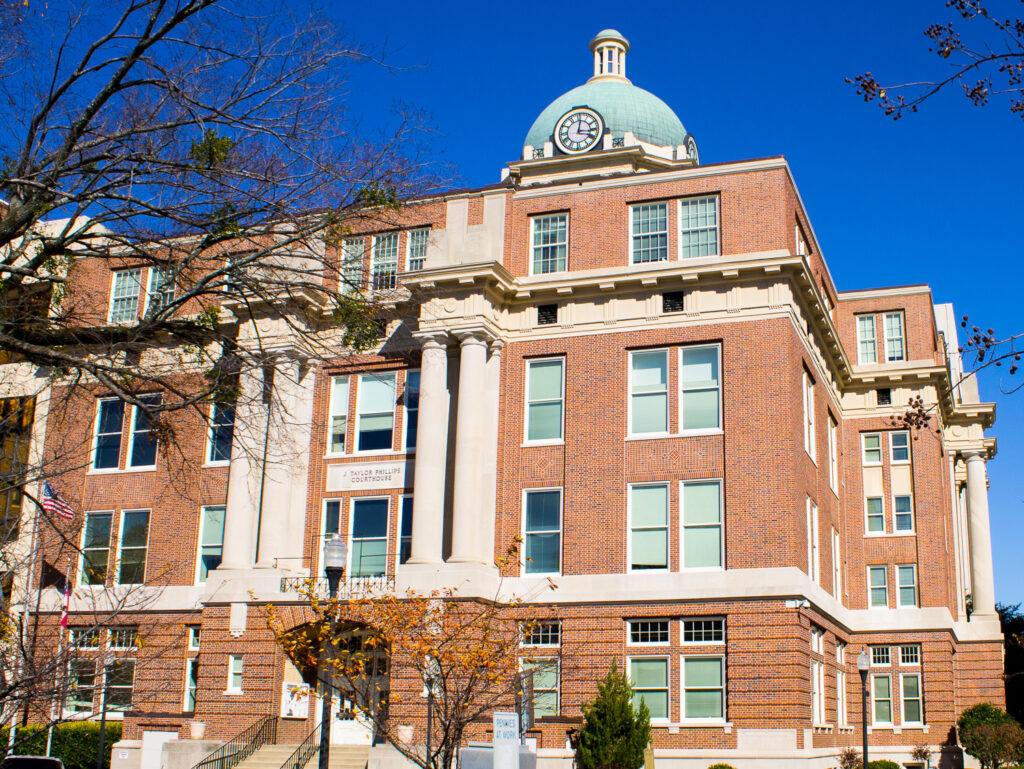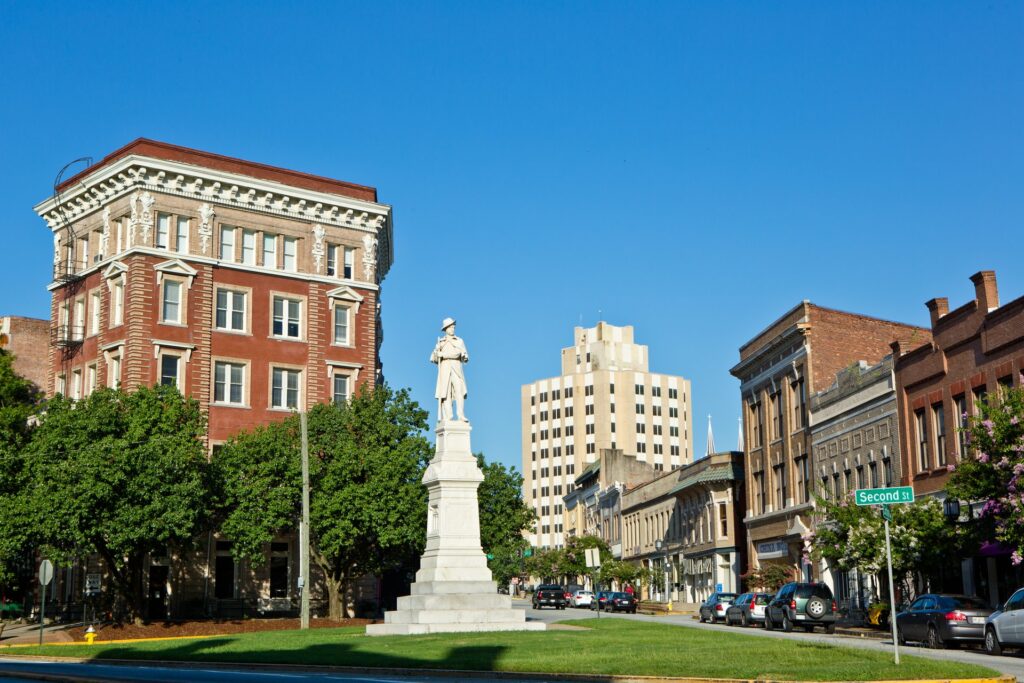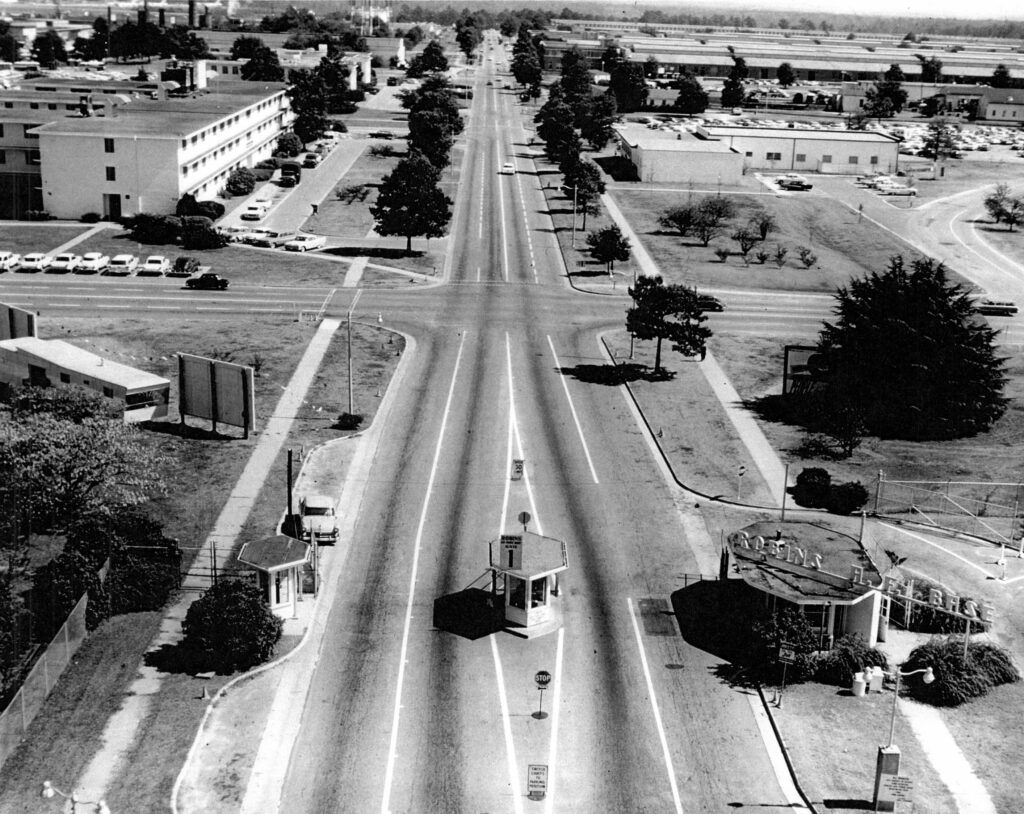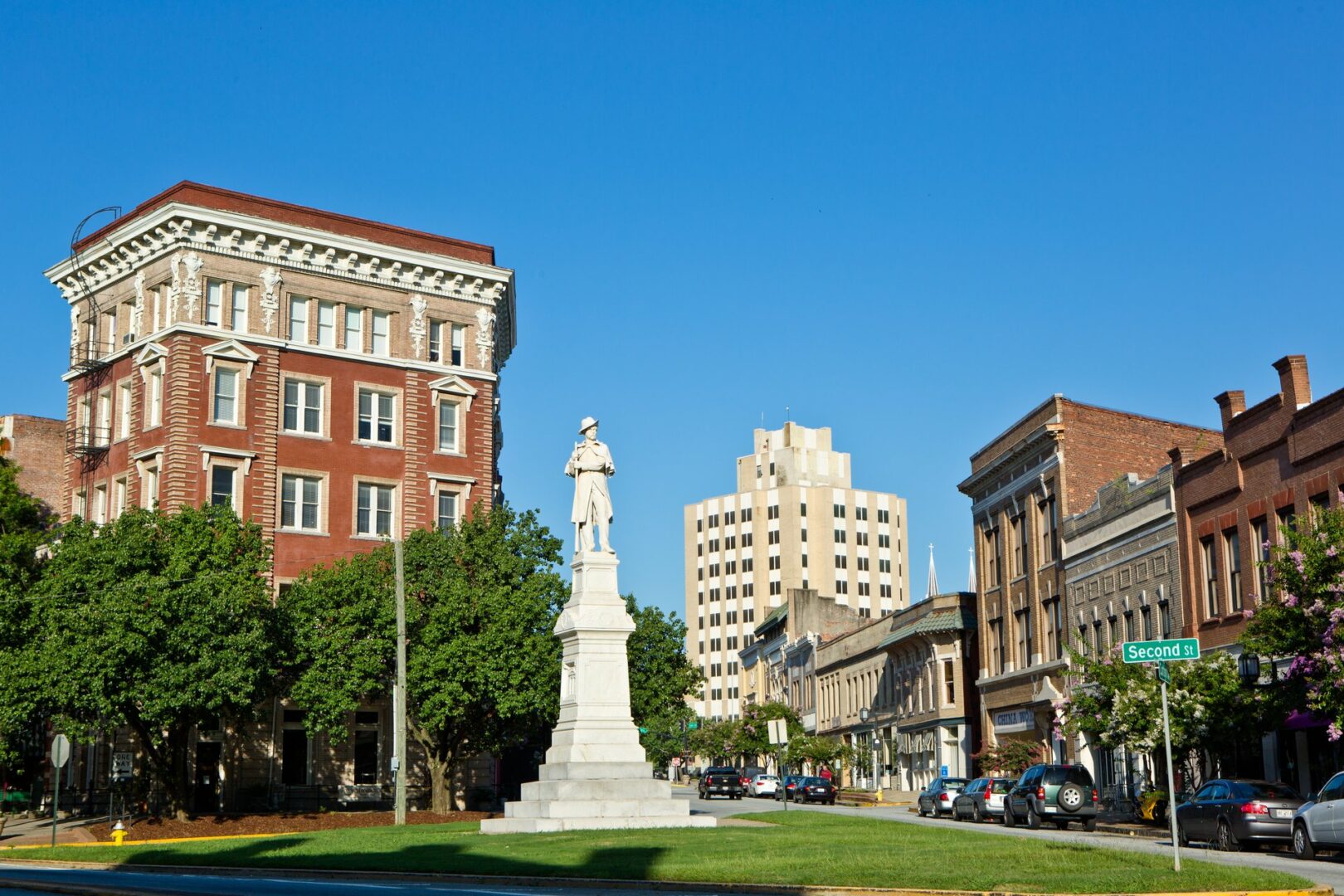Bibb County, in central Georgia, was formed December 9, 1822, one year after the Creek Indians ceded the last of their land in the area. The state’s fifty-fifth county was formed out of portions of Houston, Jones, Monroe, and Twiggs counties and was named for William Wyatt Bibb, a Georgia politician and the first elected governor of Alabama.
Geologically, Bibb County is located on the fall line, where the southern Piedmont meets the Coastal Plain. Before the arrival of European settlers, the area had been a center of a series of Native American civilizations. By the time British traders established a trading post along the river about 1690, Georgia was inhabited mostly by the Creek Indians.
As the other Native American peoples had done, the Creeks gradually lost control of their lands through a series of negotiations and treaties. Although they would not officially cede their Georgia lands until the Second Treaty of Washington in 1826, by 1821 the state of Georgia effectively had control of the areas surrounding the Ocmulgee River.
The city of Macon was formed in 1823 and serves as the county seat. Numerous smaller towns—such as Vineville and Huguenin Heights—once existed independently in Bibb County, but were eventually annexed to Macon. In 2012 residents in Macon and Bibb County voted to consolidate city and county governments. The newly constituted Macon-Bibb County, which is governed by a mayor and ten person board of commissioners, took effect in 2014. According to the 2020 U.S. Census, Macon-Bibb County had a population of 157,346.

By 1850 the county population had grown to 12,699, including 5,637 enslaved people. Its location along the fall line was crucial to its growth; steamboats (the first arrived in 1829) could not navigate the Ocmulgee River beyond Macon. The relatively healthful climate, as well as its location in the near geographic center of the state, contributed to rapid economic and industrial growth. Rail linkage to Forsyth was completed in 1838.
Bibb County was attacked only once during the Civil War (1861-65), but it was affected nevertheless. Its status as a transportation hub allowed it to become a center of manufacturing and the site of several hospitals and prisons. Macon briefly became the capital of Georgia (from November 1864 through March 1865), when Milledgeville temporarily relinquished that title. The railroads, so important to the livelihood of the central region of the state, were devastated during the Civil War, and the economy of the entire region took decades to recover.

The rails were eventually rebuilt, and central Georgia began to revive economically. Manufacturing soon rivaled agriculture as a primary employer. During World War I (1917-18), Camp Wheeler was established as an army camp in the southeastern part of the county. It operated from July 1917 to December 1918 and was reestablished during World War II (1941-45).
The arrival of the boll weevil in the state in 1915 further threatened the cotton crop, as did the post–World War I drop in cotton prices. The boll weevil would play a role in the establishment of Delta Air Lines. C. E. Woolman, of Huff Daland Dusters, Incorporated, decided that central Georgia would be an ideal place to test crop dusting. An airline hangar at Camp Wheeler was Daland’s first central office. Delta was formed from Daland in 1928 and had its headquarters in Monroe, Louisiana, until 1941, when it moved to Atlanta.
Although it is located in adjacent Houston County, Robins Air Force Base, established in 1941, has had an impact on Bibb County as well. Robins quickly became the largest employer in central Georgia, and it contributed to the rapid increase in the industrial and retail sectors in the area.

A population boom would last from the end of World War II until approximately 1960. Bibb County’s population has grown much more slowly since, and there was a slight drop in the 1980s. According to the 2020 U.S. census, the population is 157,346, an increase from the 2010 population of 155,547.
Bibb County has four institutions of higher learning: Wesleyan College (founded in 1836 and the world’s first chartered college to grant degrees to women), Mercer University, Macon State College, and Central Georgia Technical College.
Two notable Bibb Countians are poet and author Sidney Lanier and musician Otis Redding.










